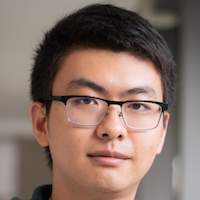

UW Ph.D. Student
Applied Mathematics
Pacific Northwest National Laboratory
Power Grid Line Fault Identification
The effort with PNNL is focused on the power grid fault line identification problem through the lens of dynamical systems and Koopman operators. The Koopman operator theory provides us the foundation to represent the dominant and transient dynamical signatures of nonlinear disturbances in a power grid system in the form of linear Koopman modes. Using optimized DMD and time-delayed, Hankelized embeddings, we can approximate the Koopman modes with a stable and robust algorithm. We approach the fault line identification problem as a classification task and propose a decision tree-based AdaBoost ensemble model in order to promote sparse PMU placement. This approach gives satisfactory classification results using very few PMU measurements with simulations on the IEEE 68-bus power system, as well as a more complex IEEE 145-bus power system. The problem emphasizes the use of sparse PMU measurements for fault line classification, so the interpretability of the model plays an important role in our choice of AdaBoost model. Classifiers with more complicated structures, such as the neural nets, shall be considered carefully in future work for improved performance with model interpretability in mind. The work is led by graduate student Frank Mei (AI Institute) is in collaboration with David Solano-Barajas, Alex Tartakovsky, and J. Nathan Kutz